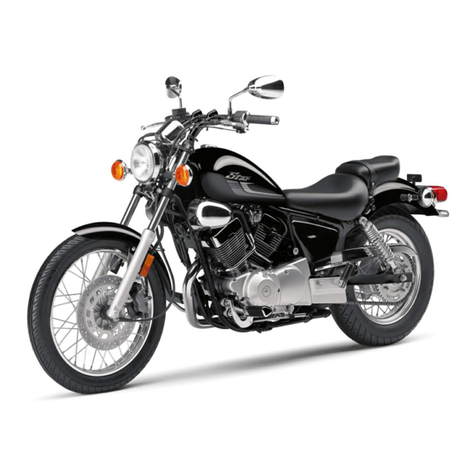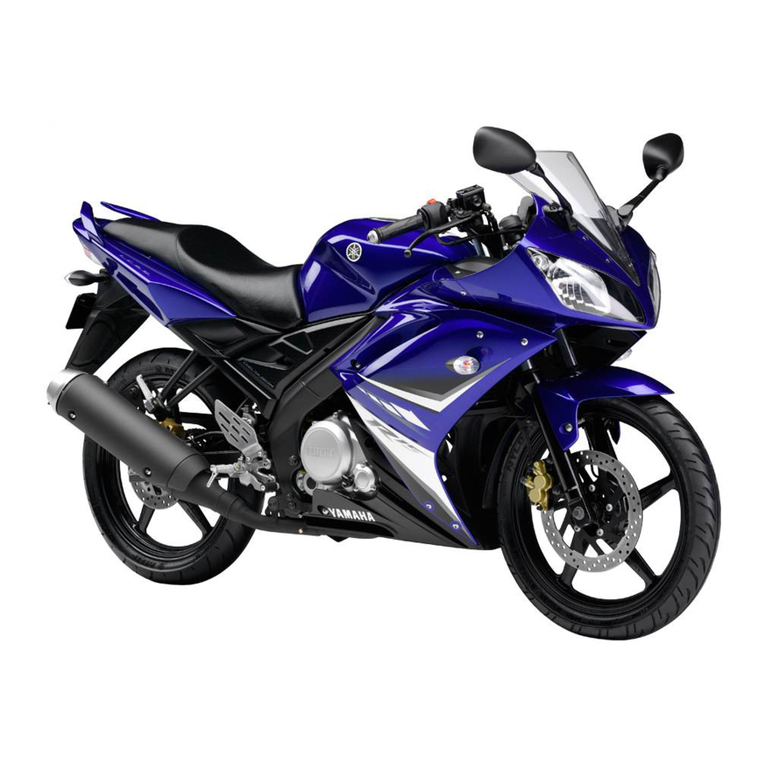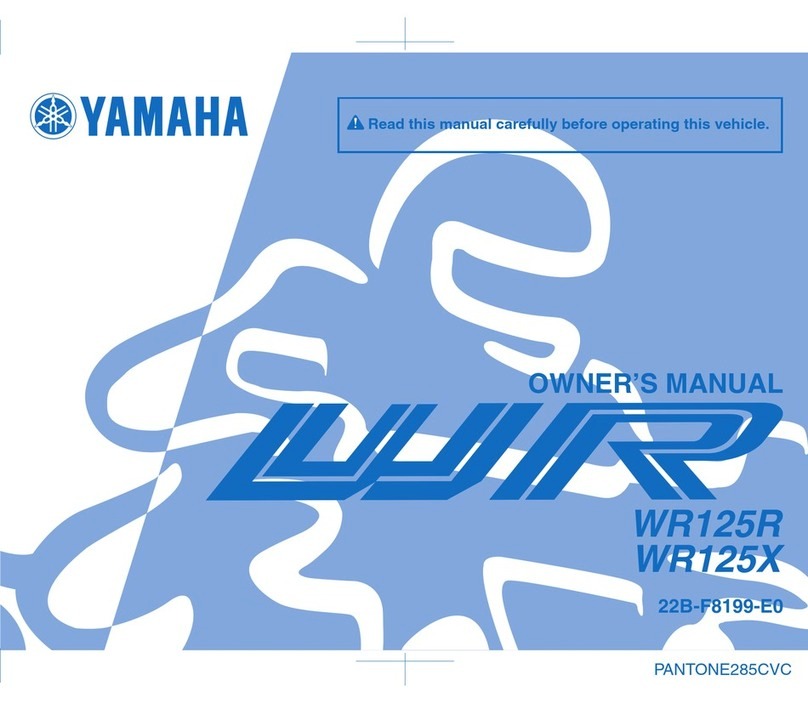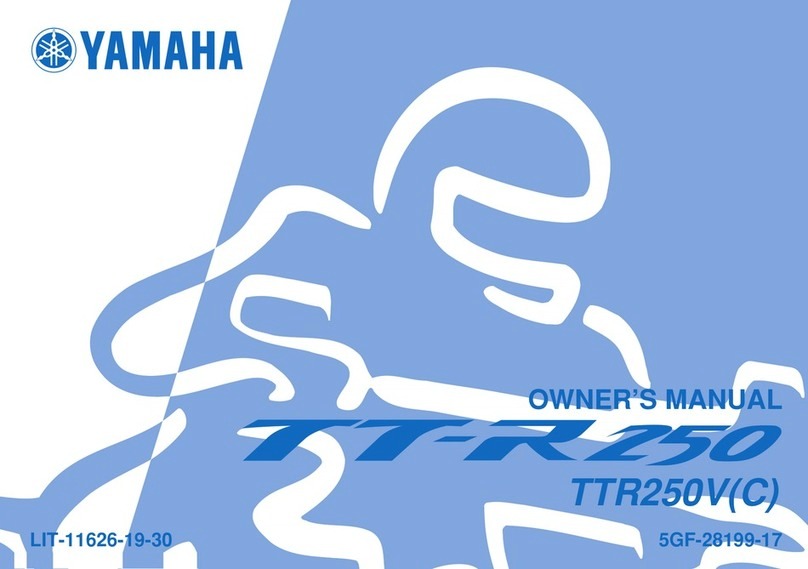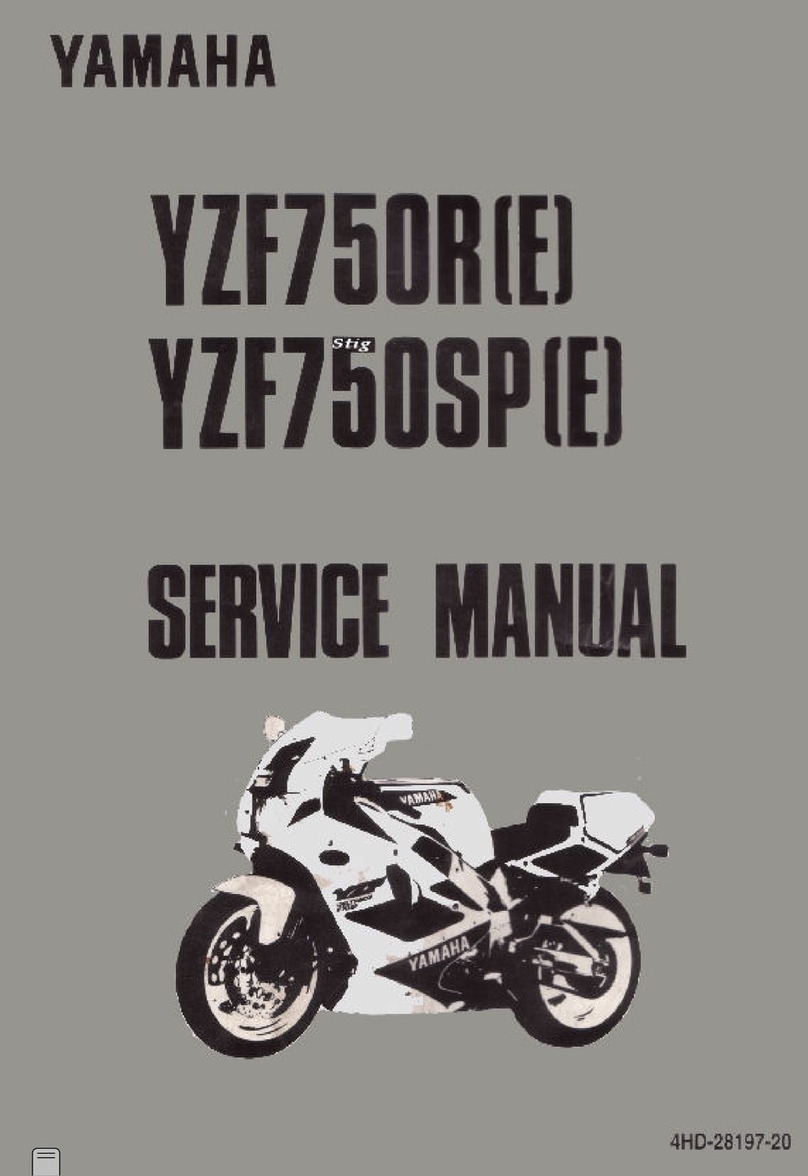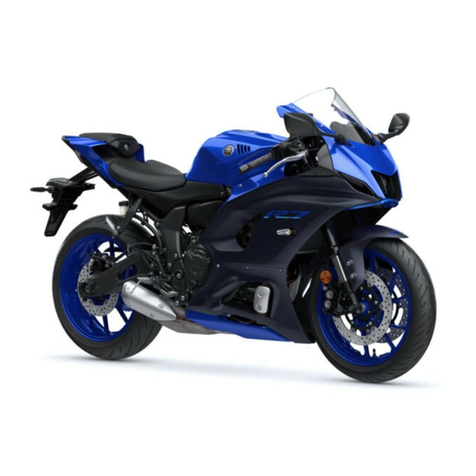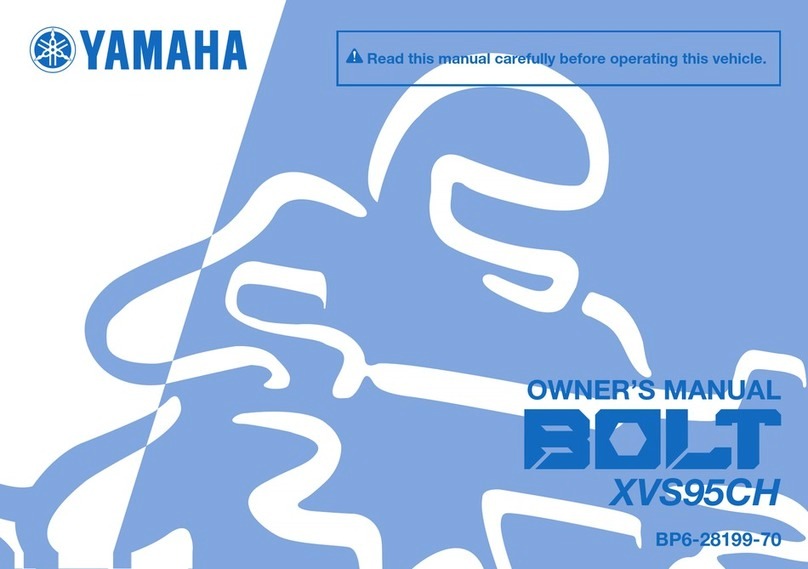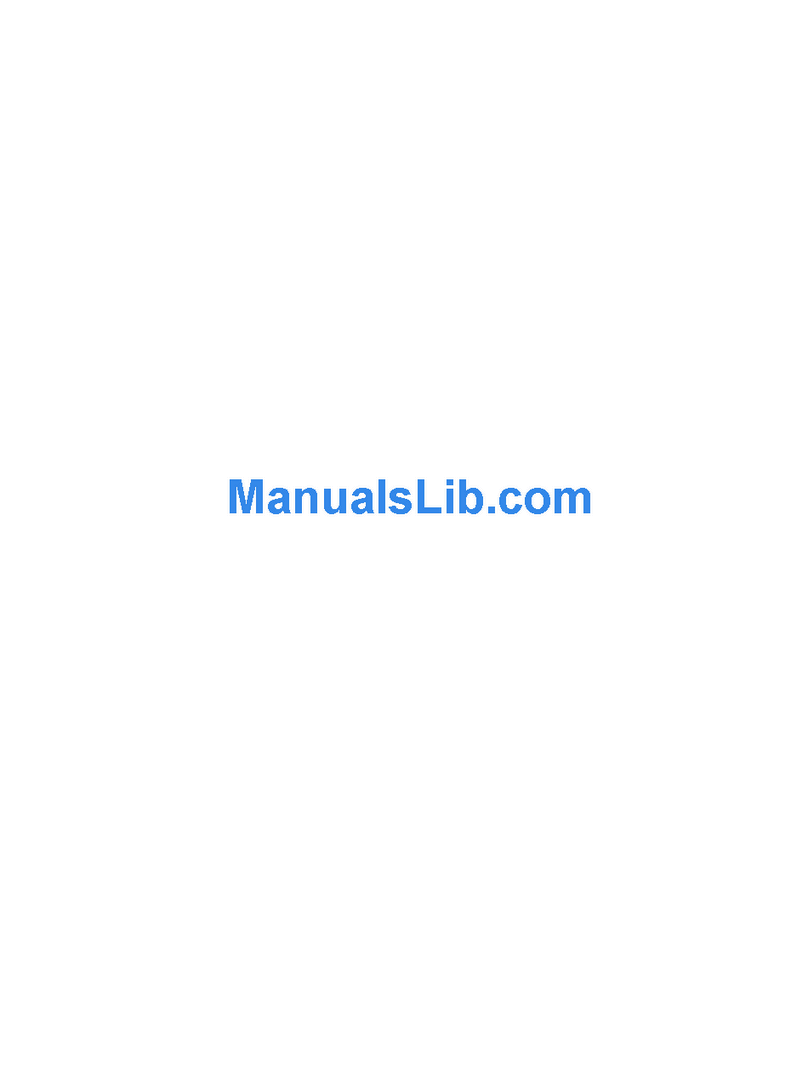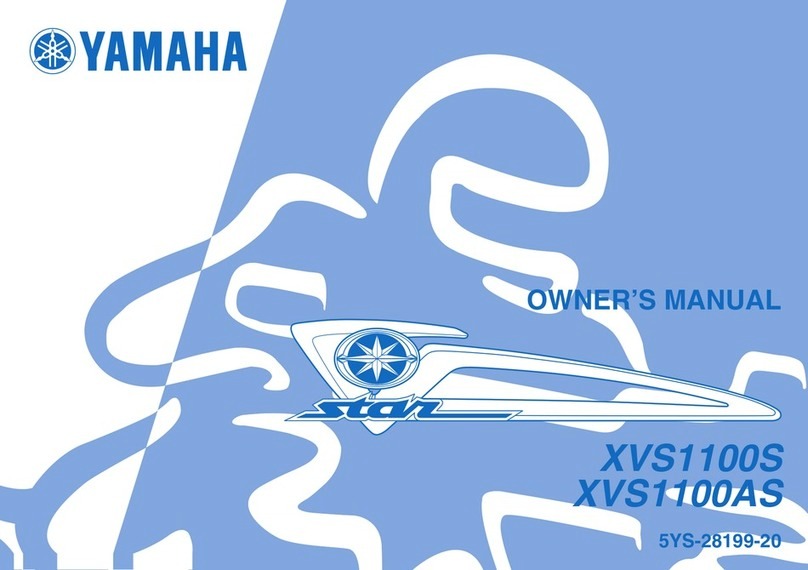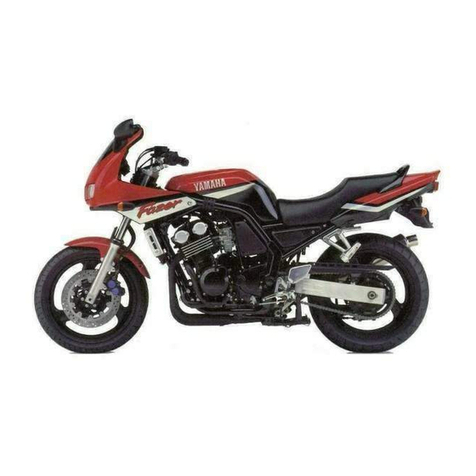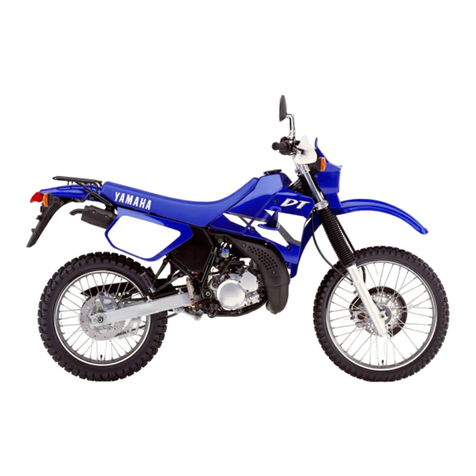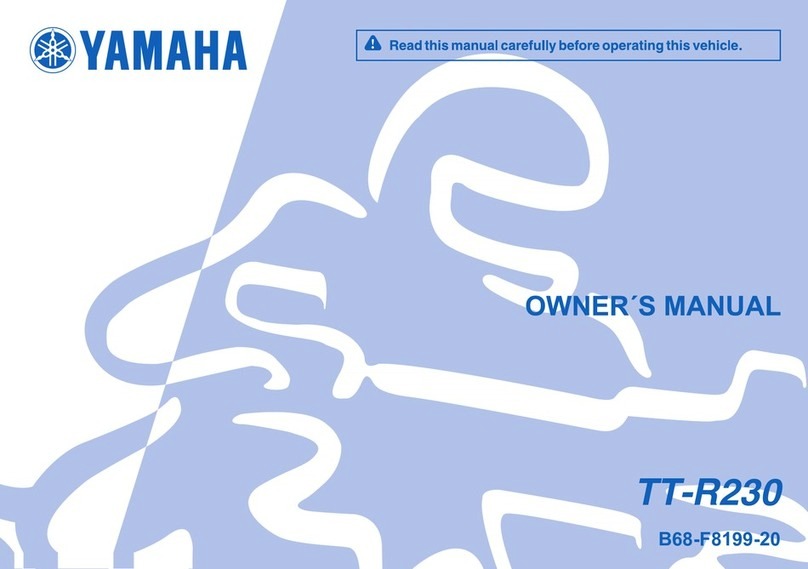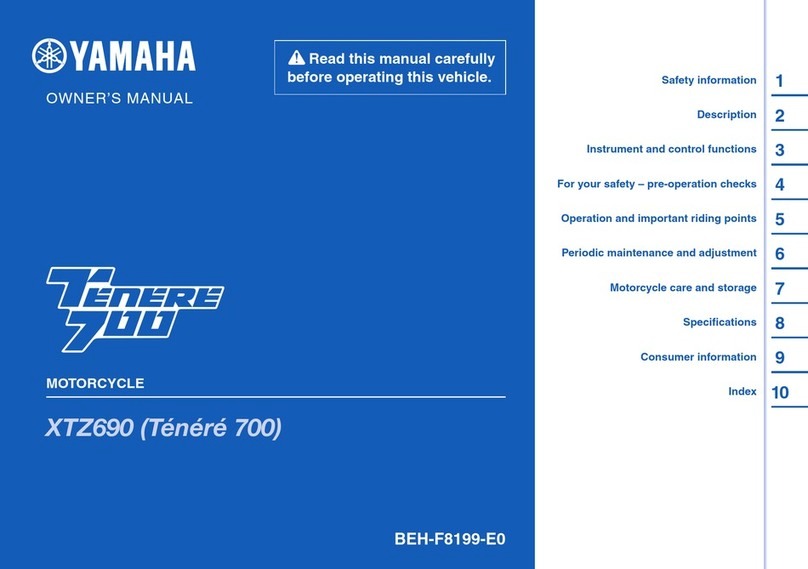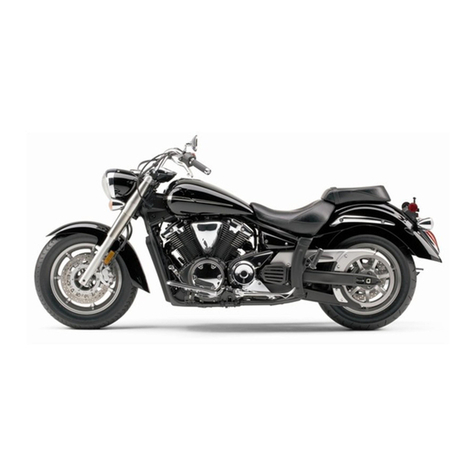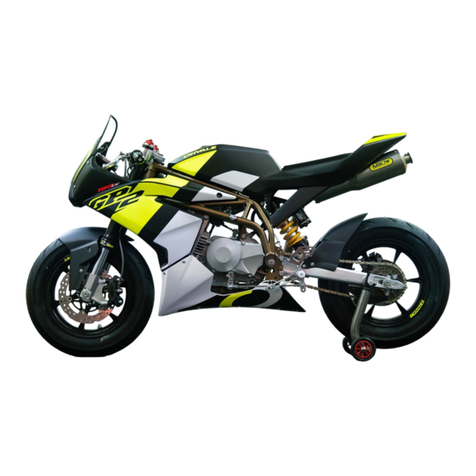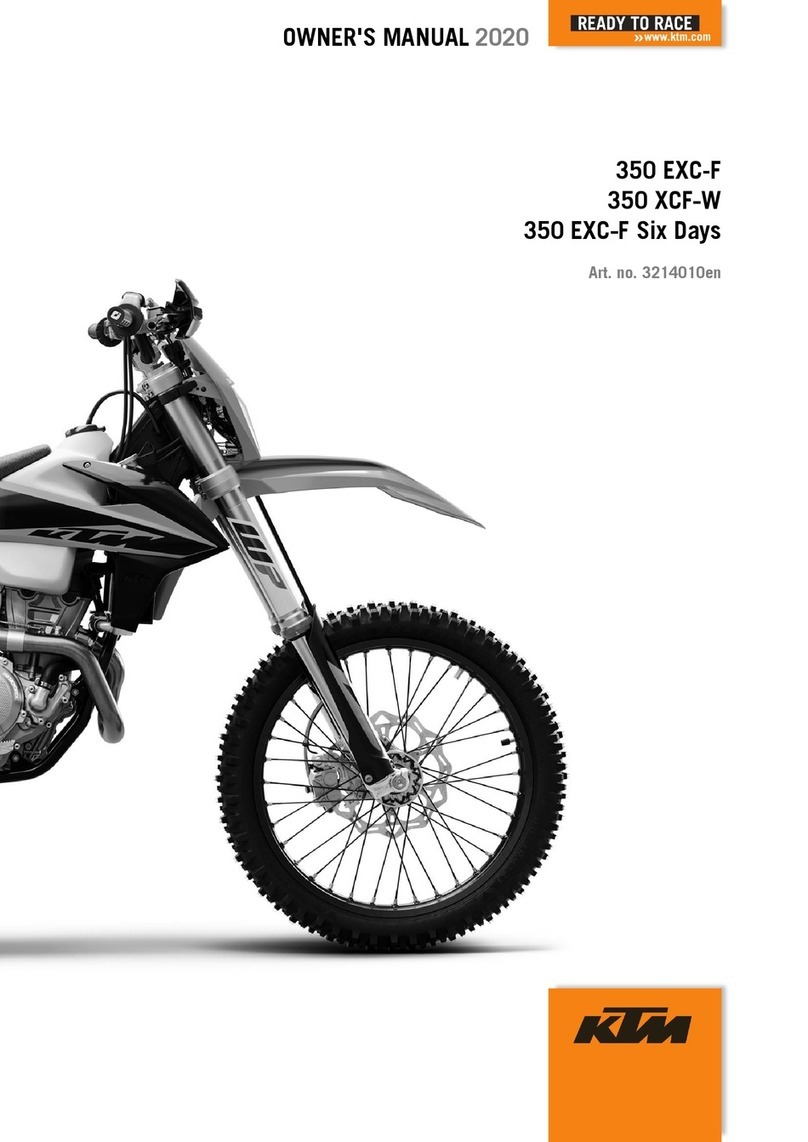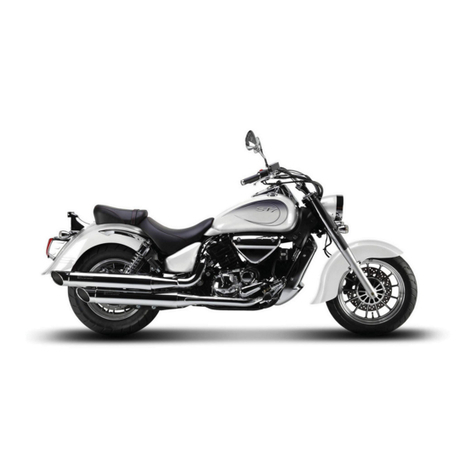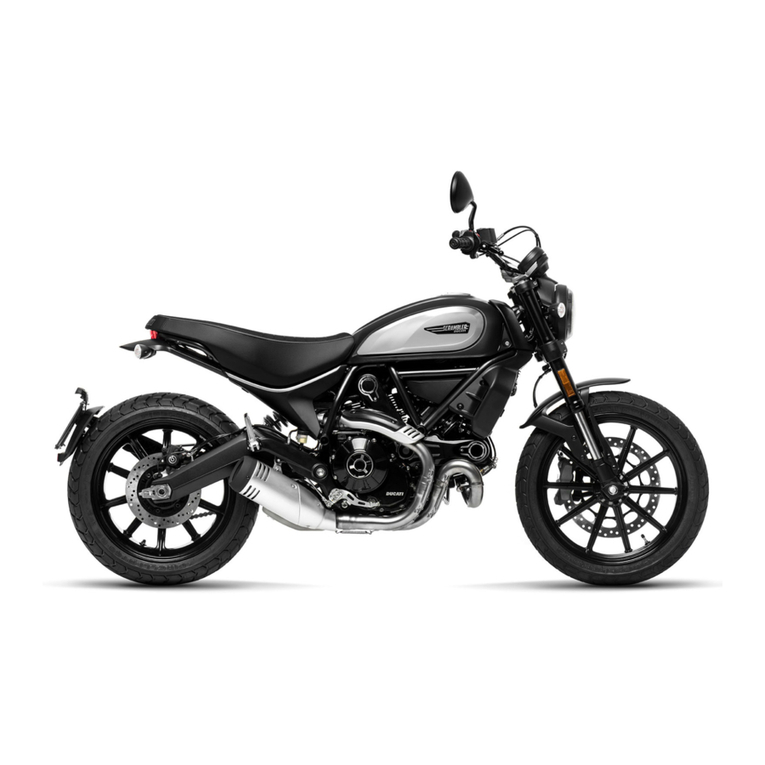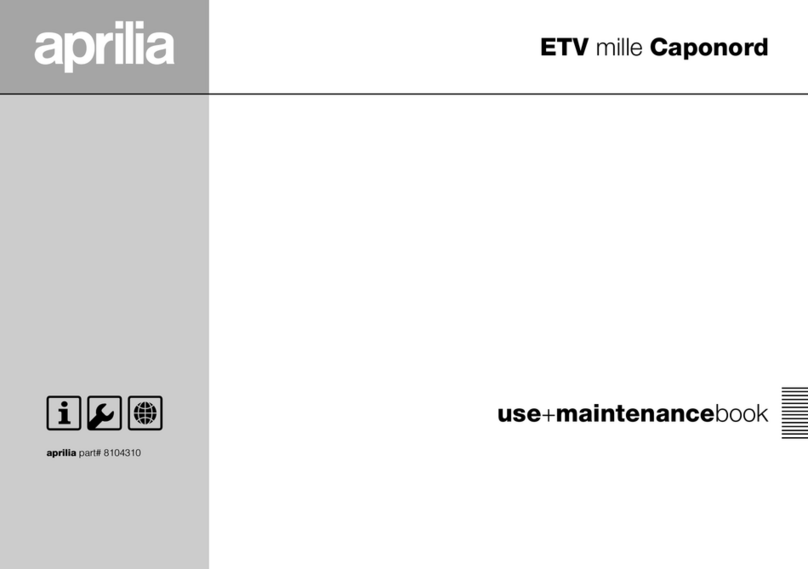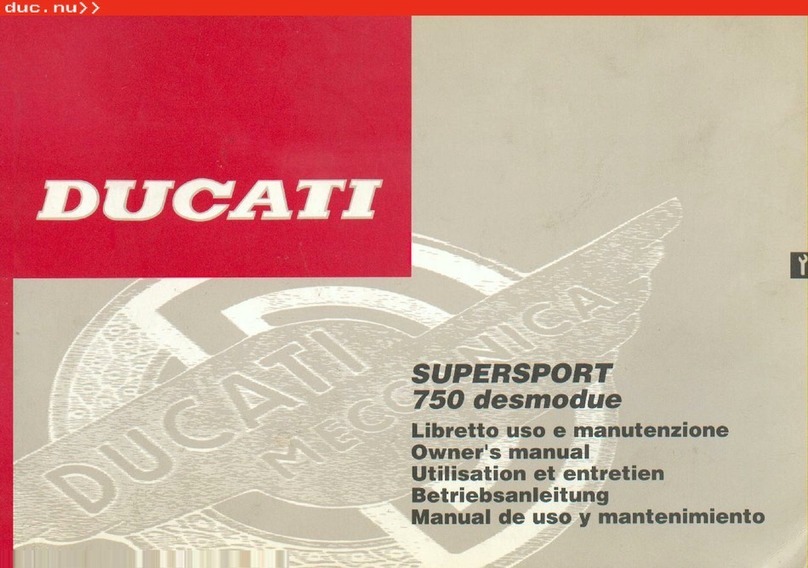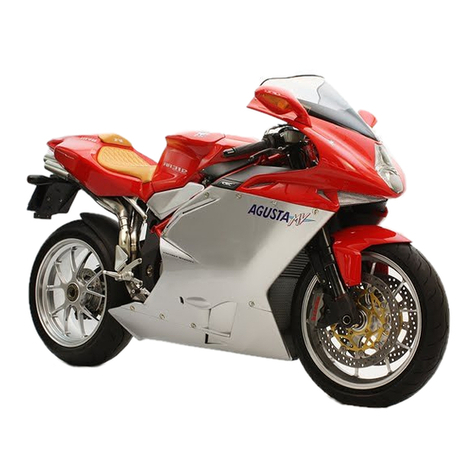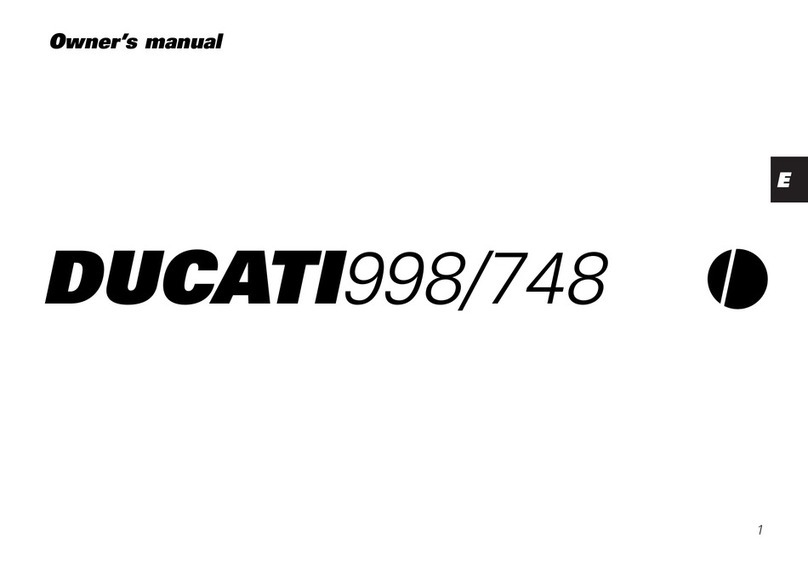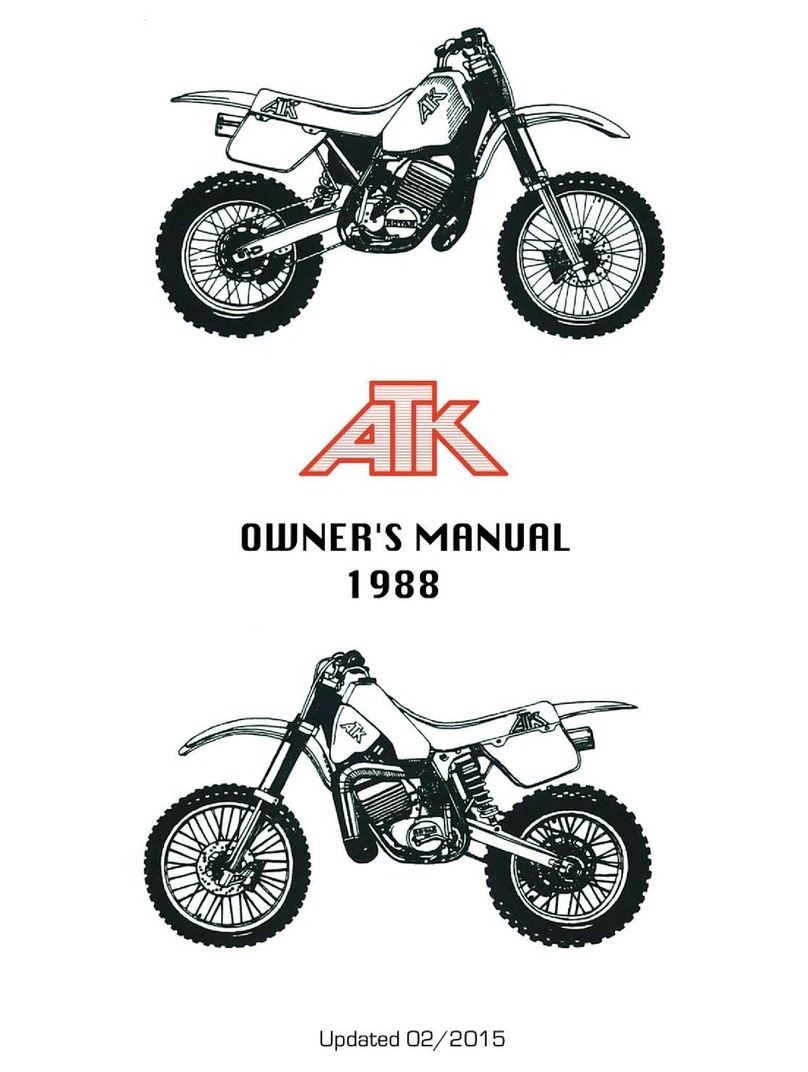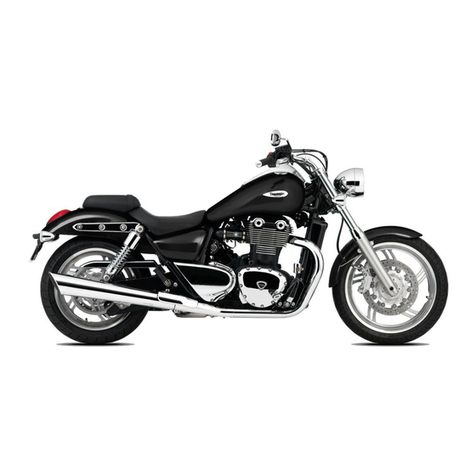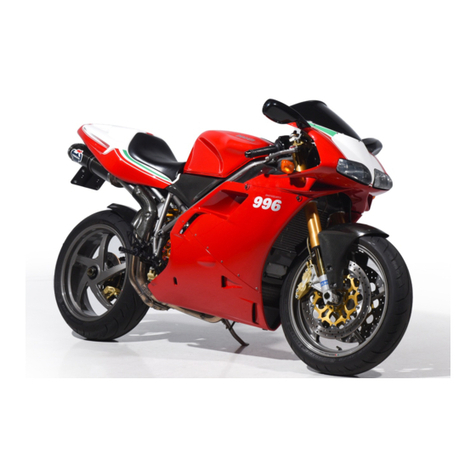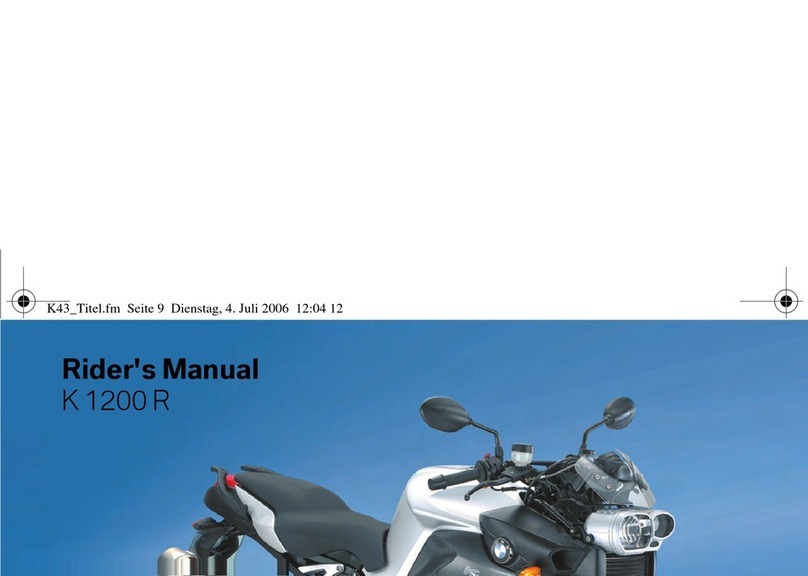
TABLE OF CONTENTS
SAFETY INFORMATION ....................1-1
Location of important labels............1-6
DESCRIPTION ...................................2-1
Left view ..........................................2-1
Right view........................................2-2
Controls and instruments ................2-3
INSTRUMENT AND CONTROL
FUNCTION .........................................3-1
Main switch .....................................3-1
Handlebar switches ........................3-1
Clutch lever .....................................3-2
Shift pedal .......................................3-2
Brake lever ......................................3-2
Brake pedal .....................................3-3
Fuel tank cap...................................3-3
Fuel .................................................3-3
Fuel tank breather hose ..................3-5
Fuel cock .........................................3-5
Starter (choke) knob........................3-6
Seat .................................................3-6
Adjusting the shock absorber
assembly......................................3-7
Starting circuit cut-off system ..........3-8
PRE-OPERATION CHECKS ..............4-1
Pre-operation check list ..................4-1
OPERATION AND IMPORTANT RIDING
POINTS ...............................................5-1
Starting and warming up a cold
engine..........................................5-1
Starting a warm engine ...................5-2
Shifting ............................................5-2
Engine break-in...............................5-3
Parking ............................................5-4
PERIODIC MAINTENANCE AND
MINOR REPAIR..................................6-1
Periodic maintenance chart for the
emission control system ..............6-2
General maintenance and lubrication
chart .............................................6-3
Removing and installing the panels6-6
Checking the spark plug .................6-7
Engine oil and oil filter element ......6-8
Cleaning the air filter element.......6-11
Adjusting the carburetor................6-13
Adjusting the throttle cable
free play .....................................6-13
Adjusting the valve clearance.......6-13
Tires...............................................6-14
Spoke wheels................................6-16
Adjusting the clutch lever
free play.....................................6-16
Adjusting the brake pedal position6-17
Checking the front brake
pads and rear brake shoes .......6-18
Checking the brake fluid level ......6-18
Changing the brake fluid ..............6-19
Drive chain slack...........................6-19
Lubricating the drive chain ...........6-20
Checking and lubricating
the cables ..................................6-21
Checking and lubricating
the throttle grip and cable ..........6-21
Checking and lubricating
the brake and clutch levers .......6-22
Lubricating the brake pedal ..........6-22
Checking and lubricating
the sidestand .............................6-22
Checking the front fork ..................6-23
Checking the steering ...................6-23
Checking the wheel bearings .......6-24
Battery ...........................................6-24
Replacing the fuse ........................6-26
Supporting the motorcycle ............6-26
Front wheel....................................6-27
Rear wheel....................................6-27
Troubleshooting ............................6-29
Troubleshooting chart ...................6-30
MOTORCYCLE CARE AND
STORAGE...........................................7-1
Care.................................................7-1
Storage............................................7-3
SPECIFICATIONS ..............................8-1
ProCarManuals.com


